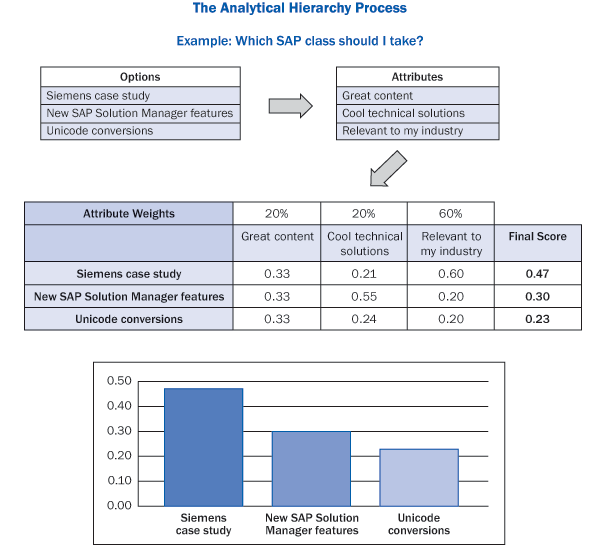Management
Managing a project list at a global corporation with multiple instances of SAP is an extremely complex endeavor. Just a few years ago, Siemens Energy was challenged by rampant chaos in its project portfolio, but by adhering to a strict clarity-oriented discipline of personal accountability, the company has enjoyed vastly improved transparency and predictability in its projects.
The line that divides complexity from chaos is a thin one. And for a global organization like Siemens Energy, keeping a busy project office on the correct side of the line is critical to its success.
Three years ago, the company was challenged by the complexity of a project office managing more than 120 project managers working in 16 instances of SAP spread among nearly 200 countries. By instituting an ambitious program aimed at identifying, eliminating, and preventing the chaos that affected the success of projects, the company was able to create a more efficient, effective project list.
“When you remove the chaos out of the project, you end up talking about facts. There’s a quote that I love, which is that ‘Bureaucracy hates facts.’ To me, bureaucracy is chaos — I think those are largely one and the same thing,” says Dennis Peters, IT project portfolio manager, Siemens Energy.
Defining Chaos
To understand how Siemens Energy defines chaos in its projects, it is helpful to consider the following definition of chaos, from the Web site www.dictionary.com:
The infinity of space or formless matter supposed to have preceded the existence of the ordered universe.
In the Siemens Energy example, the “infinity of space” is analogous to uncertainty about project costs, outcomes, or schedules. The “formless matter” is the reams of data that fail to accurately describe the progress of a project, and the state of affairs that “preceded the existence of the ordered universe” is teams of project managers working hard but accomplishing little.
At Siemens Energy, the chaos led to confusion at all levels about the progress of each project — though not for lack of data.
“I’ve seen too many project reports where people have 50 indicators and there are lines and red and green lights all over the place — which is all very interesting, but I want to know if you are ahead or behind schedule. Are you over or under budget? Tell me that simply, and if you are off, tell me why,” says Peters. “A lot of companies, including us in the past, end up creating more indicators than are really necessary. I would say we need to simplify it and hold the person accountable.”
Identifying Chaos
Like a patient in an emergency room, project chaos is identifiable by the symptoms it presents.
“I think chaos is any time you feel frustration with the project that you’re working on, when you’re not exactly sure what to do or where to go fix it,” says Peters. “When project managers come to me with a problem they believe is impossible to solve, to me that indicates chaos — they are having a hard time seeing through the chaos to drive toward a solution.”
While there are innumerable types of project chaos, Peters cites several typical examples:
- The project is inconsistent in cost and schedule forecasting.
- Project productivity seems low, even though the team is working furiously.
- T he project is fighting fires on multiple issues simultaneously, resulting in stakeholders feeling uninformed.
- Customer expectations are often missed, resulting in significant change requests late in the project life cycle.
- Issues that require co-project managers (e.g., business and IT) to duplicate efforts, miss important activities, vie for credit for successes, and blame each other when issues arise.
- Departments have different requirement priorities, and not all fit in the constraints of the project.
- Intercultural issues impact the project on global projects, even though the team participated in “intercultural” training classes.
- It seems that meetings often turn in the wrong direction without the presence of the project manager.
“When you really get down into it, you may have defined the best processes in the world, but if people aren’t following them, chaos can take hold,” says Peters.
The pyramid in Figure 1 illustrates the various stages of the move from chaos to clarity, beginning with personal accountability.

Figure 1
Moving from chaos to clarity
Eating the Elephant
While project chaos can seem insurmountable, Peters says Siemens Energy was able to take a measured approach to tackling the most common issues that lead to such issues. By implementing and enforcing a set of methodologies and providing the appropriate tools, Siemens Energy was eventually able to enjoy a greater success rate in its projects.
Refer to the sidebars “Chaos to Clarity Example #1” and “Chaos to Clarity Example #2” for illustrations of the initiative in practice.
“I don’t believe there is a problem out there too big to solve,” says Peters. “I believe in bite-sized ways to eat the elephant.”
Chaos to Clarity Example #1
Chaos: It seems that meetings often turn in the wrong direction without the presence of the project manager.
Clarity : You don’t attend every meeting and you can trust and verify that the project stays on course.
Getting there : Building trust among team members requires sensitivity to their concerns about advancing their own careers. This can be especially difficult on SAP projects, where project managers are responsible for the progress of people who report to other managers. Resources on SAP projects are often concerned about devoting much of their time to an IT project to the detriment of their “day jobs.”
Peters says you can secure buy-in from these resources in a number of ways. A primary example is to work with their managers to set goals for the resources and guarantee them their positions at the end of the project. Completion bonuses, compensation time, recognition dinners, and “talking up” the project team to upper management are other proven ways to do this, Peters says. When people recognize that you are interested in promoting their success, they become interested in promoting your success.
Quantifying the risks to each project in this way also helps separate facts from emotion when considering the ongoing viability of a struggling project. Peters says Siemens Energy has canceled or avoided a number of projects since implementing this discipline.
“Project managers can’t be so tied into their project that they’re not willing to recommend killing it if that’s the right thing for the business to do,” says Peters. “People end up hanging on to projects that have doubled in cost — or the benefits have halved, or the opportunity in the market has disappeared — because for some reason there’s an emotional connection that keeps them hanging on. By clearly identifying the chaos, they are able to go to the right people and recommend canceling or — more frequently — re-scoping the project.”
Developing a clear assessment of the projects stakeholders is another key to success, according to Peters. Some stakeholders may be overbearing, indecisive, or aloof, and each of those qualities can be managed. Project managers should frankly map the personalities and needs of each stakeholder in order to set project expectations for that person. A guide for mapping stakeholders is shown in Figure 2.

Figure 2
Assessing project stakeholders
Empowerment and Sponsorship
It took Siemens Energy about a year and half to achieve success in project clarity, says Peters. One of the challenges at Siemens Energy was to convince project managers that they could tackle difficult projects without fear of undue criticism if the project did not go smoothly.
“At Siemens we work hard to provide a project methodology that provides tools that allow our project managers to execute their projects based on their areas of strengths,” says Peters. “All we ask is that they execute it in a way that is clear, successful, easy to understand, and provides value to the organization.”
A key to the success of the initiative was the systematic empowerment of the company’s 125 project managers. To accomplish this, Siemens Energy enlisted the help of James T. Brown, a former NASA project manager and author of The Program Management Handbook. Brown worked with Siemens Energy to develop an appropriate training course, and then delivered the course, in person, to the company’s project managers in multiple seminar sessions around the world.
Peters also praises the company’s executives — especially Siemens Energy CIO Christy Woodruff and Director of Strategic IT Projects Ben Wilson — for helping sell the initiative. Having the message reinforced from the top went a long way to convincing many project managers of the importance of the effort.
“Our CIO came to many of our training sessions to reinforce to the project managers that they did not need to escalate every decision — that they were empowered to make many of those decisions themselves,” says Peters. “That drives the accountability back to the people. We wanted them to demonstrate thought leadership, not just blindly follow a process.”
The Tools of Clarity
Once the key stakeholders and project managers were on board with the initiative, it was crucial to provide the tools necessary for success.
For example, Siemens Energy instituted a consistent framework for steering committee meetings based on Robert’s Rules of Order — a generic guide for parliamentary procedure developed by a U.S. Army officer and modeled after the rules of the U.S. House of Representatives.
By following the basic rules of deliberative debate — such as the necessity of a quorum, the rules for how decisions will be made, and the discipline of following a specific agenda — steering committees can achieve increased clarity.
“This concept lends credibility to the meetings almost immediately, and allows the meetings to run more smoothly and get to decisions faster,” says Peters.
Another important tool for the success of the project portfolio is “pragmatic” support of the project methodology. Ben Wilson, the director of strategic IT projects and the key force in implementing this methodology globally, says the key to pragmatism is to “enforce consistency of the company’s methodology while at the same time empowering project managers to make their own decisions.”
For example, while project managers are not forced to follow rigid rules for every deliverable for each phase of the project, they are required to use a common vocabulary for describing those phases. Some project managers in the past referred to an “execution phase” while others call the same process a “configure phase” — an inconsistency that creates confusion within the project office.
“In the past, there was no easy way to go in and help projects because we never knew exactly where they were,” says Peters. “We could not navigate quickly through all these terms and definitions.”
Standardizing monthly project status reports and monthly portfolio reviews offers management visibility into the progress of each initiative, while promoting project manager forums and round tables encourages consistency and the spread of best practices.
“Defining a methodology is not enough. You must find opportunities to encourage and use the methodology from the top to drive consistent usage in your project managers,” says Peters.
Siemens Energy also makes available a handful of software tools to help project managers maintain process consistency. While project managers are permitted to use the tools they are most accustomed to, they are encouraged to use Microsoft SharePoint and Microsoft EPM.
“We’ve said that if they use those tools — by tracking issues and risks in SharePoint and loading the project plan into EPM — we’ll automatically generate the status reports for them. That brings people in pretty quickly and allows the project managers to focus on project success rather than administration. And it helps our PMO (Project Management Office) support the project manager and make sure they have the tools they need.”
Siemens Energy also encourages the use of tools for reconciling conflicting requirement priorities among its globally dispersed departments. Global SAP companies struggle with this issue often because of budget limitations and the fundamental differences in business needs in different nations. There will never be a system that delivers the requirements of each unit, Peters says, but there are ways to effectively prioritize those requirements.
For example, using the process of pairwise comparisons — in which each requirement is matched head-to-head with each of the others and voted on by a representative group of stakeholders — produces a clear and credible ranking of all requirements of a given project. An illustration of the pairwise comparison process at Siemens Energy is shown in Figure 3.

Figure 3
The pairwise comparison process
If a more sophisticated system is necessary to determine the ranking of requirements, Peters recommends the analytical hierarchy process. In this process, each possible choice is described with attributes that are then weighted in terms of their relevance or importance to the business. Calculating a total score gives a mathematical ranking. An example of the analytical hierarchy process is shown in Figure 4.

Figure 4
An example of the analytical hierarchy process
Chaos to Clarity Example #2
Chaos: The project is fighting fires on multiple issues simultaneously, resulting in stakeholders feeling uninformed.
Clarity: Published meeting schedules with agendas consolidate stakeholder attendance and focus on issue resolution.
Getting there : Almost all project managers have experienced the push and pull of status update demands from executives and stakeholders. Doling out updates in such an ad hoc fashion leads to frustration for all involved and gaps in communication, as project managers struggle to fit the project in between meeting update demands and stakeholders feel they must beg the project team for updates.
The solution, Peters says, is to empower project managers to take a proactive role in scheduling regular update meetings at the outset of the project. The meeting schedule should be published and distributed to all stakeholders.
“By publishing that ahead of time, instead of sponsors feeling out of the loop and begging you for information, you take control and tell them that if they want to know about the project, they should attend one of these meetings,” he says. “The funny thing is that this is just basic stuff, but it’s amazing how many people don’t do it.”
Enforcement
To keep the organization from backsliding into chaos, Siemens Energy conducts yearly training for new employees and cultivates a non-combative atmosphere during interventions in projects gone off track. The goal, Peters says, is to create an atmosphere in which bad data presented in the correct format is far preferable to data presented outside the confines of the company’s standard methodology.
“People may bring projects that are behind schedule or over budget, and our goal is to have a fact-based discussion about what is happening and what things are needed to help it get back on course. But when someone brings in a project plan and it’s clear that they have not used the methodology — if they’ve come up with a different set of metrics or are trying to do something else outside the norm — they are very quickly corrected and told they need to go back and use the methodology,” he says.
Measuring the ongoing success of the project clarity initiative is difficult, since Siemens Energy is not repeating the same projects year after year. However, Peters says the company has enjoyed far greater transparency and predictability in its project list. Issues that threaten to drive projects millions over budget in the past were not generally found until near the end of the project. Now they are identified far earlier, allowing the company to react to and address the issues with more success and fewer disruptions to the business.
“I guess I’m optimistic enough to think that there is always a solution to the problem out there somewhere — it’s just that we haven’t defined it crisply enough to unleash the creativity and brain-power potential of our employees to find the solution.”
Davin Wilfrid
Davin Wilfrid was a writer and editor for SAPinsider and SAP Experts. He contributed case studies and research projects aimed at helping the SAP ecosystem get the most out of their existing technology investments.
If you have comments about this article or publication, or would like to submit an article idea, please contact the editor.









